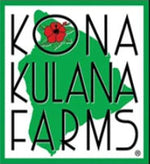Kona coffee is some of the most sought-after coffee in the world. Part of what makes Kona coffee so special is the coffee trees themselves, and how they are grown. Read on to learn about Kona's unique growing conditions, and the fascinating life cycle of a Kona coffee tree.
(This is part II of The Life Cycle of a Kona Coffee Tree: growing and harvesting. Learn more in The Life Cycle of a Kona Coffee Tree, part I).
Growing
Kona coffee trees will bloom with white flowers at intervals from January to May. Beginning in April, the green berries will appear. The cherries will ripen by late August and harvesting will start.
The cherries will not all ripen at the same time, so the trees will be hand-picked multiple times between August and January. Each Kona coffee tree will provide roughly 15 pounds of cherries. These cherries will yield an average of two pounds of roasted coffee.
This hand-picking is one of many components that make Kona coffee so unique. The careful process ensures that cherries are only harvested at their peak maturity.
During non-harvest season the Kona coffee trees are carefully cultivated. In the spring, older branches will be pruned to allow for new shoots to begin their grown cycle.
Processing
In addition to the meticulous hand-picked cherries, the wet-method processing and sun-drying are key factors in making this distinctive product.
The Kona coffee cherry is pulped within 24 hours of picking. After the bean is separated from the outer red skin, the beans will be placed in a fermentation tank overnight. The time required for fermentation will vary from 12-24 hours. The careful fermentation gives the coffee the clear, bright flavor that is characteristic to Kona coffee.
The beans are then rinsed in clean water and laid out to dry naturally. The drying racks are called hoshidanas. While spread out to dry the beans are often raked to ensure even drying. Drying will continue for seven to 14 days so that the beans reach the perfect moisture level between nine and 12 percent.
Once dry, the beans are milled in a machine to remove the silver skin and parchment. The green beans are then sorted and graded. Two beans per cherry are considered Type I beans. These are flat on one side and oval on the other. The single, round, bean known as peaberries are considered Type II.
These green coffee beans will be roasted to produce our famous 100% Kona coffee. Due to the rarity of Kona coffee, some retailers will sell Kona blends. These blends, sometimes called “Kona Roast” or “Kona Style,” are only required to contain 10% authentic Kona coffee.
We are proud to produce five brands of single-origin, 100% Kona coffee, grown with love, in medium and dark roasts.













